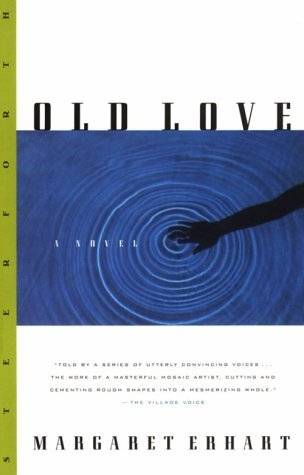Old Love
Margaret Erhart
With mixed results, Erhart (Augusta Cotton, 1992) uses five first-person narrators to explore issues of sexual identity and stifling emotional barriers as played out in suburban New Jersey during the turbulent 1960s. To a casual observer, the Haas family-mother Tommie, father Frank, son Brighton, daughter Helen-might appear the nuclear ideal. But Tommie’s miserable, Frank’s remote, Brighton broods and Helen tries to figure it all out. Tommie, it turns out, had a satisfying lesbian relationship with her college roommate, Jeanne Ann Love, and married Frank because, given the times, she believed she had no choice. Her best friend and next-door neighbor is Hal Chapin, who endured six months of an awful marriage before he could admit that he was gay. Brighton and Helen, tormented by their mother’s misery and by their father’s silence, struggle with the pains of adolescence and sexual questions of their own. The novel begins promisingly, especially with the engaging voice of the troubled Brighton; but after a while, the spectacle of all five main characters wrestling with similar sexual identity conflicts grows wearisome. Tommie begins drinking, and her frustration and confusion come to a climax on her 40th birthday, culminating in an accident that leads her to leave her family for a commune of women in Vermont. Eventual reconciliation with her family comes hard, though not as hard as the patience that a reader, despite Erhart’s genuine compassion and insight, needs to finish this frustratingly elusive work.
Copyright 1996 Reed Business Information, Inc.
From Booklist
During the late 1960s and early 1970s, the Haases had a bad time. Father Frank’s income kept them comfortable, but mother Tommie’s restiveness grew, and after the accident, she took off, first to the arms of her college roommate, then to the West Coast, then to rural Vermont. Son Brighton finished a decade of sullenness and psychotherapy to become an attractive young man (albeit gay–like mother, like son?), but as he did, daughter Helen withdrew, dropped athletics, almost stopped eating. Meanwhile, Tommie’s best friend and the family’s neighbor, Hal, came out of the closet yet always staunchly maintained ‘the halfway house for Haases.’ First one, then another of the Haases and Hal advance the story of their hard years. Each speaks in a distinctive voice; at the same time, the testimony of each is heartbreakingly lucid, simple, and intelligent. Together, they represent the human condition in late-twentieth-century America: craving the meaning family might give but living an arid individualism, suffering but not guilty. The author of the marvelous Augusta Cotton (1992) gives us another quiet novel that reverberates to the depths of the soul. Ray Olson
Check for it on:
Details
| ISBN | 1883642736 |
| Genre | Fiction |
| Publication Date | 01-Mar-99 |
| Publisher | Steerforth Press |
| Format | Paperback |
| No. of Pages | 246 |
| Language | English |
| Rating | NotRated |
| BookID | 9155 |

